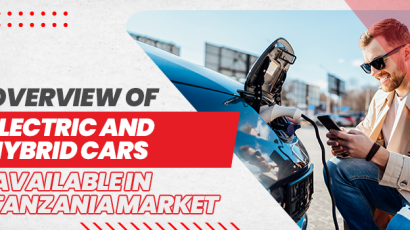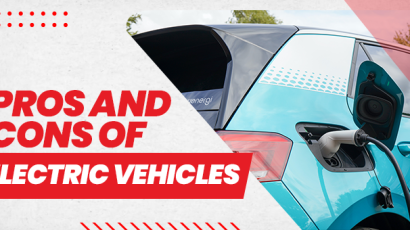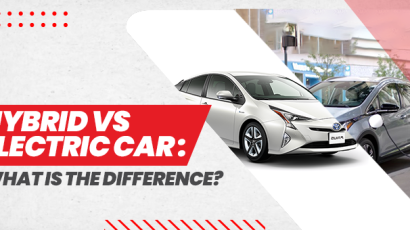
Introduction: Kenya’s EV Market on the Move
Electric vehicles (EVs) are steadily gaining traction worldwide, and Kenya is no exception. As nations push for greener solutions to combat climate change, the global shift towards electric mobility has influenced Kenya’s transport sector. The country, traditionally reliant on fossil-fuel-powered vehicles, is now embracing cleaner and more sustainable transportation options. But what exactly is driving this shift, and how is Kenya adapting to global trends in the EV market? So, let’s dive into the details of this sustainable mobility movement.
The Global Push for Electric Mobility
The Rise of EVs across the World
The global automotive industry is undergoing a significant transformation. Governments, corporations, and consumers are increasingly prioritizing sustainability, and electric vehicles have emerged as a key solution. Moreover, countries such as Norway, China, and the United States are leading the charge with aggressive policies, incentives, and investments in EV infrastructure.
One of the most significant drivers of this shift is the commitment to reducing carbon emissions. Many countries have pledged to phase out internal combustion engine (ICE) vehicles within the next few decades. Additionally, advances in battery technology, reductions in production costs, and growing consumer awareness have made EVs more accessible than ever.
How Global Trends Are Impacting Kenya
Kenya, like many developing nations, is feeling the ripple effects of these global trends. As the cost of electric vehicle components falls, more businesses and customers in Kenya are looking into EVs as a feasible alternative to traditional gasoline and diesel vehicles. Furthermore, international collaboration and investments are accelerating the country’s transition to electric mobility.
The Current State of Electric Vehicles in Kenya
A Growing but Nascent Market
While still in its early stages, EV adoption in Kenya is showing signs of promise. Companies such as BasiGo and Opibus (now Roam) have introduced electric buses and motorcycles to the Kenyan market, targeting both public and private transportation sectors. Moreover, these early adopters are proving that electric vehicles can work efficiently in Kenya’s unique economic and infrastructural landscape.
The government has also recognized the potential of EVs, introducing policies to support their adoption. Reduced import duties on electric vehicles and tax incentives for EV manufacturers are among the measures aimed at stimulating growth in the sector.
Key Players in Kenya’s EV Market
Several companies are pioneering the EV movement in Kenya:
BasiGo: A company that provides electric buses designed for the local market, with a pay-as-you-drive financing model to make EVs more affordable for public transport operators.
Roam (formerly Opibus): Focused on electrifying motorcycles, buses, and even safari vehicles, Roam is playing a significant role in Kenya’s EV revolution.
Kiri EV: A startup offering affordable electric motorcycles to address Kenya’s demand for clean and efficient two-wheelers.
Overall, these companies are not only introducing EVs to the market but also building the necessary ecosystem, including charging infrastructure and maintenance services.
Infrastructure Development and Challenges
The Need for Charging Infrastructure
One of the biggest challenges to EV adoption in Kenya is the lack of widespread charging infrastructure. Unlike conventional petrol stations, EV charging points are still relatively scarce, making range anxiety a concern for potential buyers.
However, efforts are underway to improve this situation. Several companies and government agencies are working on establishing a network of charging stations in major cities and along key transport corridors. For instance, Kenya Power has announced plans to roll out public charging stations to support the growing EV market.
Overcoming Challenges in EV Adoption
As electric vehicles in Kenya are not widespread and are still in their early stages of adoption and expansion, there may well be challenges to address. However, despite the progress, several challenges remain:
High Initial Costs: Even with reduced taxes, electric vehicles remain expensive for many Kenyans. The high cost of lithium-ion batteries significantly contributes to the price gap between EVs and traditional fuel-powered vehicles.
Limited Model Availability: The Kenyan market currently has a limited selection of EV models, making it difficult for consumers to find vehicles that suit their needs and budgets.
Public Awareness and Skepticism: Many people are still unfamiliar with EV technology. There is a need for public education on the benefits of electric vehicles and how they compare to ICE vehicles in terms of cost savings and environmental impact.
Government Policies and Incentives
The Role of Policy in EV Adoption
Kenya’s government is increasingly supportive of the move to electric mobility. Several rules and incentives have been implemented to make EVs more appealing to both customers and investors.
Key Government Initiatives:
Tax Reductions: The government has lowered import duties on fully electric vehicles to make them more affordable.
Investment in Green Energy: Kenya already generates over 80% of its electricity from renewable sources, making EVs an even more sustainable option.
Public-Private Partnerships: The government is collaborating with private sector players to expand charging infrastructure and promote local EV manufacturing.
Even while these initiatives are praiseworthy, more work must be done to provide a favorable atmosphere for the broad adoption of EVs.
The Future of Electric Vehicles in Kenya
Despite the challenges and government initiatives to support the widespread acceptance and availability of electric vehicles in Kenya, there is still a long road ahead. However, the future doesn’t look bleak, and here’s what can be expected:
A Sustainable Road Ahead
The future of electric vehicles in Kenya looks promising. As technology improves and global demand for EVs rises, prices are expected to drop, making them more accessible to the average consumer. Additionally, as charging infrastructure expands and awareness grows, more Kenyans will be encouraged to make the switch.
Potential for Local Manufacturing
One of the most exciting prospects for Kenya’s EV market is the potential for local manufacturing. If Kenya can develop a strong EV assembly industry, it could reduce reliance on imports and create jobs in the green economy. For instance, companies like Roam are already assembling electric motorcycles locally, signaling the start of a homegrown EV industry.
The Role of Renewable Energy
Kenya is well-positioned to leverage its vast renewable energy resources to power electric vehicles sustainably. With abundant solar, wind, and geothermal energy, the country has a unique opportunity to create an EV ecosystem that is both environmentally friendly and cost-effective.
Expansion of Charging Infrastructure
Building charging networks will become more important as EV adoption rises. The private sector, in collaboration with the government, will need to establish fast-charging stations in strategic locations such as urban centers, highways, and residential areas to ensure seamless travel for EV users.
Conclusion: Embracing the Electric Future
In conclusion, Kenya’s transition to electric mobility is in motion, driven by global trends, local innovation, and supportive government policies. While challenges remain, the momentum is undeniable. As more stakeholders join the movement, the dream of a cleaner, greener, and more efficient transport system in Kenya is becoming a reality.
For businesses, policymakers, and consumers, now is the time to embrace the electric future and contribute to a more sustainable world. The road ahead is electric—Kenya just needs to accelerate its progress.











